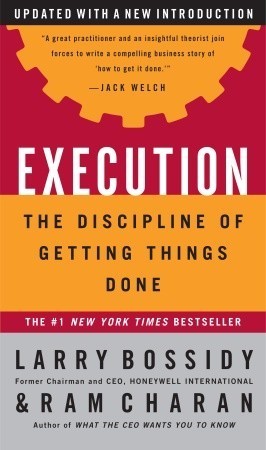More on this book
Community
Kindle Notes & Highlights
Read between
April 28 - June 18, 2020
the source of the problem:
weak marketing leadership at the top.
needs a discipline that is embedded in the people process,
Most people know someone in their organization who doesn’t perform well, yet manages to keep his job year after year.
leader doesn’t have the emotional fortitude
Such failures can do considerable damage ...
This highlight has been truncated due to consecutive passage length restrictions.
He missed his first year’s financial commitments. He lost market share, and the cost structure of his operation became uncompetitive.
Stan did not close plants, cut costs, or focus on execution.
CEO took no ...
This highlight has been truncated due to consecutive passage length restrictions.
Then Stan missed the second year’s targets.
But the move came too late to save the company.
Within six months, it was taken over.
The CEO was very bright, a man of high integrity, always willing to give people the benefit of the doubt.
But he lacked the courage to confront poor performers, or force plant...
This highlight has been truncated due to consecutive passage length restrictions.
hold him accountable for his poor performance.
A captive of his psychological comfort and blind loyalty,
Howard would not replace them. Before the year was over, the board removed him and his team.
When the right people are not in the right jobs, the problem is visible and transparent.
But the foundation of a great company is the way it develops people—providing
If you spend the same amount of time and energy developing people as you do on budgeting, strategic planning, and financial monitoring, the payoff will come in sustainable competitive advantage.
They don’t ask the most important question: How good is this person at getting things done?
But if you want to build a company that has excellent discipline of execution, you have to select the doer.
lower IQ but who is absolutely determined to succeed, you’ll always do better with the second person.
You can easily spot the doers by observing their working habits. They’re the ones who energize people, are decisive on tough issues, get things done through others, and follow through as second nature.
and strategic planning.
Some leaders drain energy from people and others create it.
just sits there. Sometimes people like that just don’t interview well, and if he’s had great
The leaders whose visions come true build and sustain their people’s momentum.
Deeply involved in all aspects of his business, he is curious and tireless—the
He never finishes a conversation without summarizing the actions to be taken.
Decisiveness is the ability to make difficult decisions swiftly and well, and act on them.
Some leaders simply do not have the emotional fortitude
to confront the to...
This highlight has been truncated due to consecutive passage length restrictions.
procrasti...
This highlight has been truncated due to consecutive passage length restrictions.
Few tough issues are more challenging for indecisive
leaders than dealing with people they’ve promoted who are not performing.
indecisive and not an energizer.
Getting things done through others is a fundamental leadership skill.
if you can’t do it, you’re not leading.
They’re the micromanagers, insecure leaders who can’t trust others to get it right because they don’t know how to calibrate them and monitor their performance.
They believe wholeheartedly in delegating:
Some people are just temperamentally unable to work well with others.
He was smart, articulate, and extremely appealing in the way he worked with his superiors.
He was abrasive—”almost a drill sergeant,”
He didn’t include others in decision making.
People who can’t work with others reduce the capacities of their organizations.
Follow-through is the cornerstone of execution,
religiously.
Following through ensures that people are doing the things they committed to do, accordin...
This highlight has been truncated due to consecutive passage length restrictions.
Never finish a meeting without clarifying what the follow-through will be, who will do it, when and how they will do it, what resources they will use, and how and when the next review will take place and with whom.


